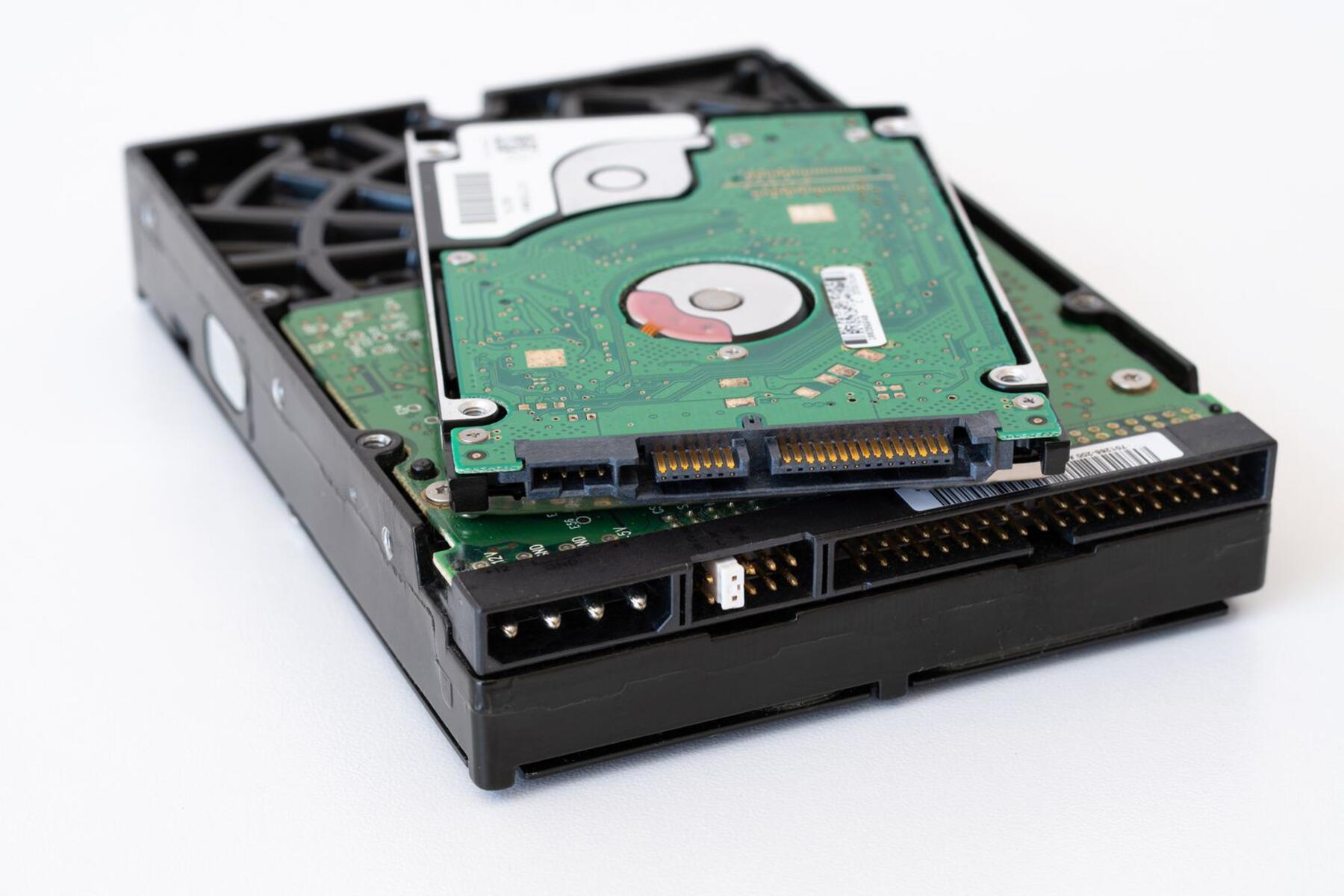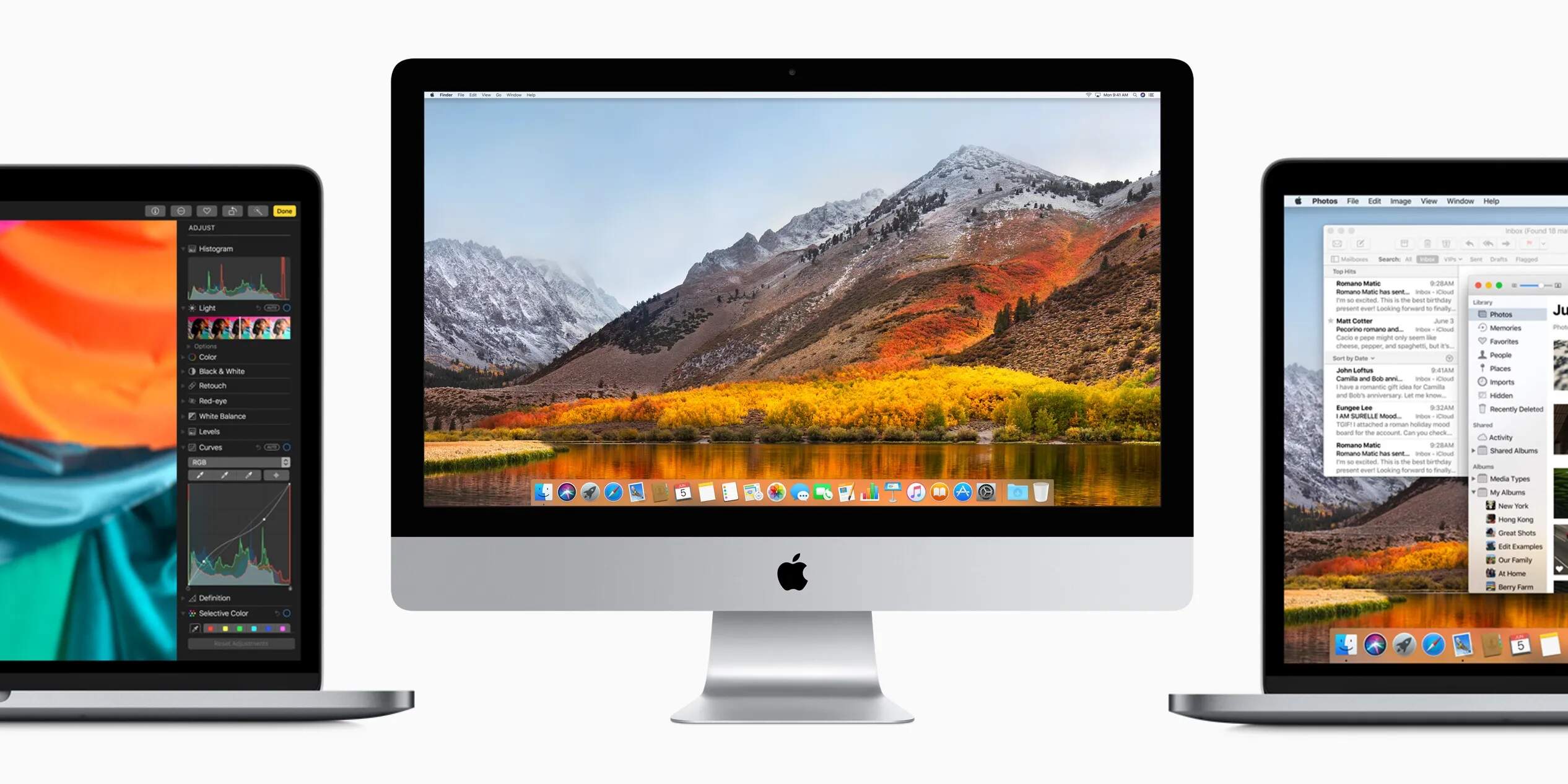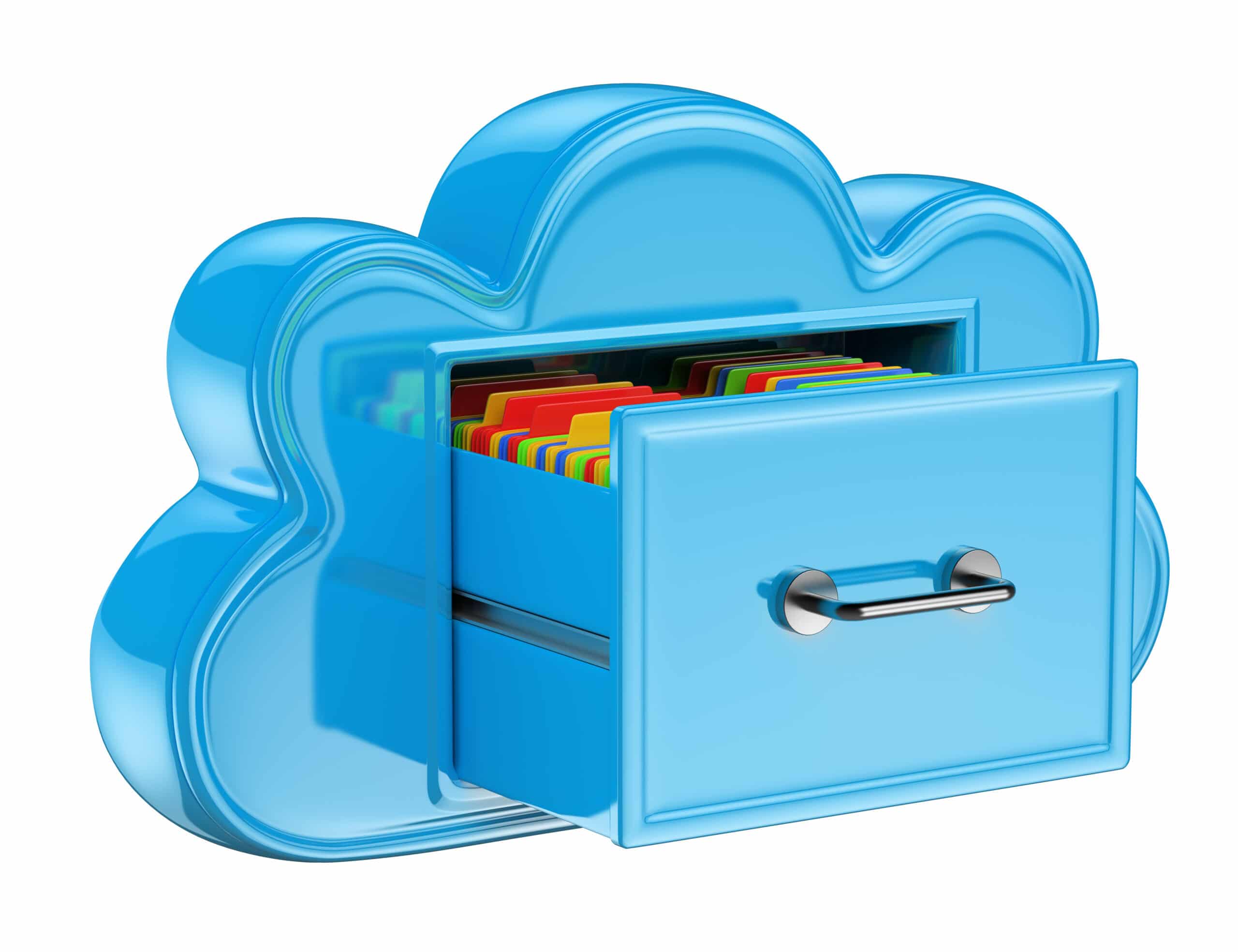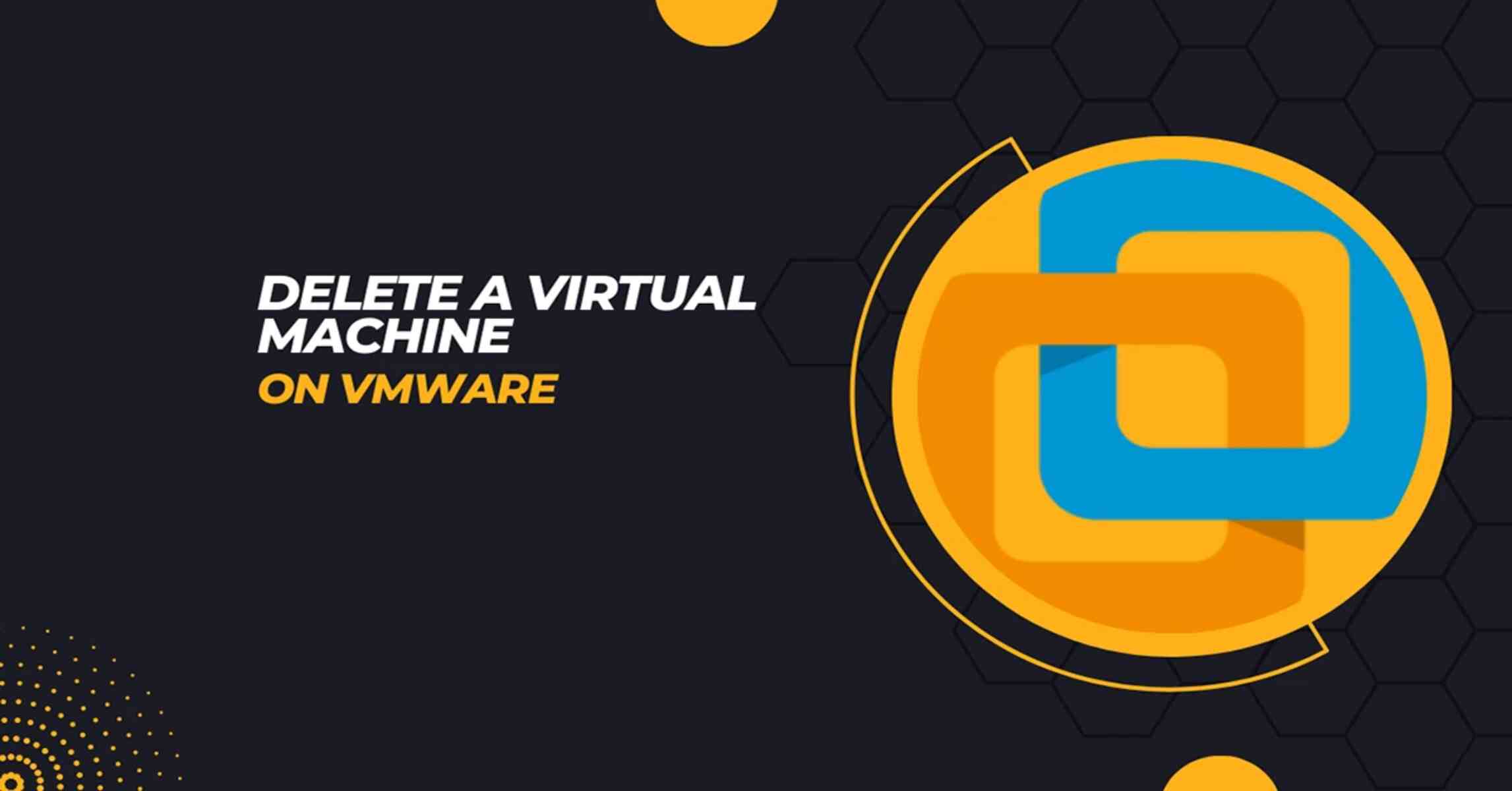Introduction
Welcome to our guide on how to use a VMDK file in VMware Workstation! If you are new to the world of virtualization or looking to expand your knowledge, this article will walk you through the process of utilizing VMDK files in VMware Workstation, a popular virtualization software.
Virtual Machine Disk (VMDK) files are virtual hard disk files used by VMware virtualization software. These files contain the entire contents of a virtual machine’s hard disk, including the operating system, applications, and data. If you have obtained a VMDK file, it is possible to use it in VMware Workstation to create a virtual machine and run it on your system.
Using VMDK files in VMware Workstation has several benefits. It allows you to easily test different operating systems, software configurations, and network setups without affecting your primary system. It also enables you to share virtual machines with others, making it a convenient tool for collaborations, software development, and testing.
Before we get started, it’s important to ensure that you have the necessary prerequisites in place. It is required to have VMware Workstation installed on your system, as well as a VMDK file that you wish to use. Once you have everything ready, you can follow the step-by-step instructions in this guide to successfully utilize a VMDK file in VMware Workstation.
What is a VMDK File?
A VMDK file, also known as a Virtual Machine Disk file, is a file format used by VMware virtualization software. It represents the virtual hard disk drive of a virtual machine. Think of it as a container that holds all the files and data necessary for the virtual machine to function.
When you create a virtual machine in VMware, the VMDK file is created to store the operating system, applications, and data associated with that virtual machine. It provides a separate storage space within your physical hard drive for the virtual machine to operate independently.
A VMDK file is essentially a binary file that contains a virtual disk image. It mimics the structure and functionality of a physical hard drive, allowing virtual machines to read from and write to it just as if it were a real disk. This file format is platform-independent, meaning VMDK files can be used on different operating systems, including Windows, macOS, and Linux.
One of the advantages of using VMDK files is their flexibility. They can be easily moved, copied, and shared between different VMware products and versions, making it convenient for virtual machine migration or collaborating with others. Additionally, VMDK files support features such as snapshots, which allow you to save and restore the state of a virtual machine at a specific point in time.
It’s important to note that VMDK files are not compatible with other virtualization software such as VirtualBox or Hyper-V. Each virtualization platform has its own file format for storing virtual machine disks, and converting between them may require additional steps.
Now that you have a better understanding of what a VMDK file is, let’s explore how to use it in VMware Workstation to create a virtual machine and get it up and running!
Why Use a VMDK File in VMware Workstation
There are several reasons why using a VMDK file in VMware Workstation can be advantageous. Let’s explore some of the key benefits:
- Virtualization and Testing: VMware Workstation allows you to create and run virtual machines on your system. By using a VMDK file, you can easily set up and test different operating systems, software configurations, and network setups without installing them directly on your physical machine. This is particularly useful for developers, system administrators, and IT professionals who need to experiment or validate new software or configurations.
- Isolation: By running a virtual machine from a VMDK file, you create an isolated environment separate from your host operating system. This isolation helps to ensure that any changes made or issues encountered within the virtual machine do not affect your primary system. It provides a safe sandbox to test potentially risky or unstable software without putting your system at risk.
- Portability: VMDK files offer great portability. You can easily move or copy the VMDK files between different instances of VMware Workstation or even across different physical machines. This makes it convenient to share virtual machines with colleagues, transfer them to different workstations, or create backups for disaster recovery purposes.
- Collaboration: If you are working on a project with multiple team members, using VMDK files in VMware Workstation enables easy collaboration. By sharing VMDK files, team members can work on the same virtual machine environment, making it easier to test, troubleshoot, and make changes collectively. This promotes efficient teamwork and reduces the need for physical hardware replication.
- Cross-Platform Compatibility: VMDK files are compatible with multiple operating systems, including Windows, macOS, and Linux. This means that VMDK files created on one platform can be used on another without compatibility issues. This flexibility allows for seamless virtual machine migration between different systems, making it convenient for users who frequently switch between operating systems or want to take advantage of specific features available on different platforms.
In summary, utilizing a VMDK file in VMware Workstation offers a wide range of benefits, including virtualization and testing capabilities, isolation from the host system, portability, collaboration opportunities, and cross-platform compatibility. These advantages make VMDK files a valuable resource for developers, IT professionals, and anyone looking to efficiently manage and utilize virtual machines.
Prerequisites
Before you can use a VMDK file in VMware Workstation, there are a few prerequisites that need to be in place. Make sure to check off the following requirements:
- VMware Workstation: You will need to have VMware Workstation installed on your system. This software allows you to create, manage, and run virtual machines. If you haven’t already installed VMware Workstation, you can download the latest version from the official VMware website.
- VMDK File: You will need a VMDK file that you want to use in VMware Workstation. This file should contain the virtual machine disk image that you want to run. VMDK files can be obtained from various sources, such as virtual machine backup files, virtual appliance downloads, or disk images created using other virtualization software. Ensure that you have a valid and functional VMDK file available.
- System Requirements: VMware Workstation has its own system requirements that must be met for optimal performance. Make sure that your system meets these requirements, including sufficient processor, RAM, and hard disk space. You can find the specific system requirements for the version of VMware Workstation you are using in the official documentation.
- Operating System Compatibility: Verify that your operating system is compatible with VMware Workstation. VMware Workstation is available for Windows and Linux operating systems, so ensure that you are using a supported version of either Windows or Linux.
- Enough Disk Space: Make sure you have enough free disk space to accommodate the VMDK file and the virtual machine you are going to create. VMDK files can take up a significant amount of space, especially if they contain large amounts of data. Plan for enough storage space on your system to avoid any limitations or performance issues.
By ensuring that you have VMware Workstation installed, a valid VMDK file, a system that meets the requirements, a compatible operating system, and enough disk space, you are now ready to proceed with using a VMDK file in VMware Workstation. Let’s move on to the step-by-step process of integrating the VMDK file and creating a virtual machine!
Step 1: Download and Install VMware Workstation
The first step in using a VMDK file in VMware Workstation is to download and install the VMware Workstation software. Follow these instructions to get started:
- Visit the VMware website: Go to the official VMware website at www.vmware.com.
- Choose VMware Workstation: Navigate to the “Products” section and select “VMware Workstation” from the list of available products. Make sure you are downloading the version that is compatible with your operating system.
- Download VMware Workstation: Click on the “Download Now” button to begin the downloading process. Depending on your internet connection, this may take some time.
- Run the installer: Once the download is complete, locate the installer file and double-click to run it.
- Follow the installation wizard: The installer will launch an installation wizard. Follow the on-screen instructions to proceed with the installation. You may be asked to accept the license agreement, choose the installation location, and select additional components. Make appropriate selections based on your preferences.
- Enter the license key: If you have a license key for VMware Workstation, enter it when prompted. If you don’t have a license key, you can choose to install VMware Workstation as a trial version for a limited time.
- Complete the installation: After entering the license key or selecting the trial version, click on the “Finish” button to complete the installation process. VMware Workstation will now be installed on your system.
Once the installation is complete, you can launch VMware Workstation from the Start menu or desktop shortcut. You are now ready to move on to the next step and begin using a VMDK file in VMware Workstation.
Step 2: Download the VMDK File
Now that you have VMware Workstation installed, the next step is to download the VMDK file that you want to use. Follow these instructions to download the VMDK file:
- Identify the source: Determine where you can obtain the VMDK file. This could be from a virtual machine backup, a virtual appliance, or a disk image created using other virtualization software.
- Visit the source website: If the VMDK file is available for download from a specific website, go to that website using a web browser.
- Locate the VMDK file: Browse through the website or navigate to the specific page where the VMDK file is hosted. Look for the download link or button associated with the VMDK file.
- Start the download: Click on the download link or button to initiate the download process. Depending on the size of the VMDK file and your internet connection, it may take some time to complete.
- Select the destination folder: When prompted, choose the folder on your computer where you want to save the downloaded VMDK file. Make sure to select a location that you can easily remember and access later.
- Monitor the download: Allow the download to proceed and monitor its progress. Avoid interrupting the download to ensure a successful and complete file transfer.
- Verify the downloaded file: Once the download is complete, verify the integrity of the downloaded VMDK file. You can do this by comparing its size and hash value with the information provided on the source website, if available.
By following these steps, you should now have successfully downloaded the VMDK file onto your computer. In the next step, we will move the file to the appropriate folder in preparation for using it in VMware Workstation.
Step 3: Move the VMDK File to the Appropriate Folder
After downloading the VMDK file, the next step is to move it to the appropriate folder in preparation for using it in VMware Workstation. Follow these instructions to complete this step:
- Locate the VMDK file: Open the file explorer on your computer and navigate to the folder where the VMDK file was downloaded. Remember the folder location as you will need it for the next steps.
- Identify the VMware Workstation virtual machines folder: Depending on the operating system, the location of the VMware Workstation virtual machines folder may vary. By default, on a Windows system, it is typically found at “C:\Users\YourUsername\Documents\Virtual Machines”. On a Linux system, it is commonly located at “/home/YourUsername/Documents/Virtual Machines”.
- Open the VMware Workstation virtual machines folder: Use the file explorer to navigate to the appropriate folder for VMware Workstation virtual machines based on the information in the previous step.
- Create a new folder: Inside the virtual machines folder, create a new folder with a descriptive name for your virtual machine. This folder will contain the necessary files for the virtual machine, including the VMDK file.
- Move the VMDK file: Select the downloaded VMDK file and move it into the newly created folder within the virtual machines folder. This ensures that VMware Workstation can access the file and use it to create a virtual machine.
- Verify the file placement: Double-check that the VMDK file is now located within the appropriate folder for VMware Workstation virtual machines. This will ensure that it is easily accessible when creating a new virtual machine.
By completing this step, you have successfully moved the downloaded VMDK file to the appropriate folder within the VMware Workstation virtual machines directory. With the file in place, you can now proceed to the next step and create a new virtual machine in VMware Workstation.
Step 4: Create a New Virtual Machine in VMware Workstation
Now that the VMDK file is in the correct folder, it’s time to create a new virtual machine in VMware Workstation and use the VMDK file. Follow these instructions to create a new virtual machine:
- Launch VMware Workstation: Open VMware Workstation by either clicking on the desktop shortcut or navigating to it through the Start menu.
- Click on “Create a New Virtual Machine”: In the VMware Workstation window, select “Create a New Virtual Machine” to start the virtual machine creation wizard.
- Choose “Typical” configuration: In the virtual machine creation wizard, select the “Typical (recommended)” option to create a basic virtual machine configuration. Click “Next” to proceed.
- Select the operating system: Choose the appropriate operating system for your virtual machine. This should match the operating system that is installed in the VMDK file. Select the operating system and version from the provided list. Click “Next” to continue.
- Specify the virtual machine name: Enter a name for your virtual machine. Choose a descriptive name that will help you identify the virtual machine easily. You can also select the location of the virtual machine files, but it is recommended to keep the default location. Click “Next” to proceed.
- Specify the disk capacity: Specify the maximum disk size for your virtual machine. This should be equal to or larger than the size of the VMDK file. You can choose to store the virtual disk as a single file or split it into multiple files. Select the appropriate option and click “Next” to continue.
- Customize hardware: In the next window, you can customize various hardware settings for the virtual machine, including memory, network, display, and other options. Adjust these settings according to your needs. Click “Next” to proceed.
- Select “Use an existing virtual disk”: In the “Select a Virtual Disk” window, choose the option “Use an existing virtual disk”. Browse to the folder where you placed the VMDK file and select it. Click “Next” to continue.
- Finish the virtual machine creation: Review the summary of the virtual machine settings and click “Finish” to complete the virtual machine creation process.
With these steps completed, you have successfully created a new virtual machine in VMware Workstation and attached the VMDK file to it. In the next step, we will further customize the virtual machine settings to ensure optimal performance.
Step 5: Customize Virtual Machine Settings
After creating a new virtual machine in VMware Workstation and attaching the VMDK file to it, the next step is to customize the virtual machine settings to meet your specific requirements. Follow these instructions to customize the virtual machine settings:
- Open the virtual machine settings: With the virtual machine selected in VMware Workstation, go to the “Edit” menu and choose “Virtual Machine Settings”. Alternatively, you can right-click on the virtual machine and select “Settings”.
- Customize hardware: In the settings window, you can customize various hardware settings of the virtual machine. This includes options such as memory allocation, processor settings, network adapters, and additional peripherals. Adjust these settings according to your needs and the requirements of the operating system and applications running within the virtual machine.
- Manage virtual disks: Within the settings window, you can also manage the virtual disks attached to the virtual machine. This includes options such as resizing the virtual disk, adding additional virtual disks, or changing disk storage preferences. Ensure that the virtual disk settings align with the storage requirements of the VMDK file and your intended usage of the virtual machine.
- Configure network settings: If your virtual machine requires network connectivity, make sure to configure the network settings accordingly. This includes selecting the appropriate network adapter type, specifying IP addresses or DHCP settings, and configuring any network-specific options required by your operating system or network environment.
- Adjust display settings: Depending on your preferences and requirements, you may want to adjust the display settings for the virtual machine. This includes options such as resolution, color depth, and multiple monitor support. Set these options to match your display environment and performance needs.
- Save and apply changes: Once you have finished customizing the virtual machine settings, click “OK” or “Apply” to save the changes. The virtual machine will be updated with the new settings.
By following these steps and customizing the virtual machine settings, you can ensure that the virtual machine is configured according to your specific needs and provides optimal performance for running the VMDK file. In the next step, we will add the VMDK file to the virtual machine to complete the setup process.
Step 6: Add the VMDK File to the Virtual Machine
After customizing the virtual machine settings, the next step is to add the VMDK file to the virtual machine in VMware Workstation. Follow these instructions to complete this step:
- Open the virtual machine settings: With the virtual machine selected in VMware Workstation, go to the “Edit” menu and choose “Virtual Machine Settings”. Alternatively, you can right-click on the virtual machine and select “Settings”.
- Click on “Add”: In the settings window, click on the “Add” button to add a new hardware device to the virtual machine.
- Select “Hard Disk”: From the list of device types, select “Hard Disk” and click on the “Next” button.
- Choose “Use an Existing Virtual Disk”: In the next window, choose the option “Use an Existing Virtual Disk” and click on the “Next” button.
- Browse to the VMDK file: Click on the “Browse” button and navigate to the folder where you placed the VMDK file. Select the VMDK file and click on the “Finish” button.
- Apply the changes: Back in the virtual machine settings window, click on the “OK” or “Apply” button to apply the changes and add the VMDK file to the virtual machine.
Once you have completed these steps, the VMDK file is now successfully added to the virtual machine in VMware Workstation. This means that the virtual machine will be able to access and use the contents of the VMDK file when it is powered on. In the next step, we will start the virtual machine to begin using the VMDK file.
Step 7: Start the Virtual Machine
After adding the VMDK file to the virtual machine and completing the necessary configurations, the final step is to start the virtual machine in VMware Workstation. Follow these instructions to start the virtual machine:
- Select the virtual machine: In the VMware Workstation window, locate the virtual machine that you have created and added the VMDK file to.
- Power on the virtual machine: Right-click on the virtual machine and select the “Power” option from the context menu. Then, choose “Power On” to start the virtual machine.
- Wait for the virtual machine to start: The virtual machine will now go through the startup process, just like a physical computer. Depending on the virtual machine’s specifications and the operating system being used, it may take a few moments to fully start up.
- Login to the virtual machine: Once the virtual machine has finished starting up, you will be presented with the login screen of the operating system running within the virtual machine. Use the appropriate login credentials to access the virtual machine.
- Utilize the VMDK file: With the virtual machine successfully started, you can now use the VMDK file and access the contents stored within it. Any applications, files, or settings contained within the VMDK file will be available for use within the virtual machine.
- Perform the desired tasks: Now that the virtual machine is up and running, you can perform any necessary tasks using the applications and data stored within the VMDK file. Install software, run programs, access files, and carry out any other operations as needed.
- Shut down or suspend the virtual machine: When you are finished using the virtual machine, you can choose to shut it down or suspend it. To shut down the virtual machine, select the “Power” option again and choose “Power Off”. To suspend the virtual machine, select “Suspend”. This allows you to resume the virtual machine at a later time without losing any work in progress.
By following these steps, you have successfully started the virtual machine in VMware Workstation and are now able to utilize the VMDK file. Remember to properly shut down or suspend the virtual machine when you are finished to avoid any data loss or issues. Congratulations on completing the process and effectively using the VMDK file in VMware Workstation!
Conclusion
Congratulations on successfully utilizing a VMDK file in VMware Workstation! Throughout this guide, we have covered the steps necessary to download and install VMware Workstation, obtain a VMDK file, move the file to the appropriate folder, create a new virtual machine, customize its settings, add the VMDK file, and start using the virtual machine.
By leveraging VMDK files in VMware Workstation, you can take advantage of virtualization and testing capabilities, create isolated environments, enjoy portability, collaborate with others, and ensure cross-platform compatibility. This flexibility allows you to explore various operating systems, software configurations, and network setups without impacting your physical machine.
Remember to pay attention to the prerequisites, such as having VMware Workstation installed, obtaining a valid VMDK file, ensuring system requirements are met, and having enough disk space. Following these prerequisites will ensure a smooth and successful experience when working with VMDK files in VMware Workstation.
Additionally, be sure to customize the virtual machine settings to optimize performance and meet your specific needs. Adjusting hardware configurations, managing virtual disks, configuring network settings, and fine-tuning display options will enhance your virtual machine experience.
Finally, once the VMDK file has been added to the virtual machine, you can start it up and begin utilizing the contents within the file. This opens up a world of possibilities where you can install software, run applications, access files, and perform various tasks just as you would on a physical machine.
By following these step-by-step instructions, you can make the most of VMDK files in VMware Workstation and unlock the benefits of virtualization. Whether you are a developer, IT professional, or simply curious about exploring different operating systems, using VMDK files in VMware Workstation will provide you with the flexibility, versatility, and convenience you need.
So go ahead, continue to explore and experiment with VMDK files in VMware Workstation, and take your virtualization journey to new heights!

























